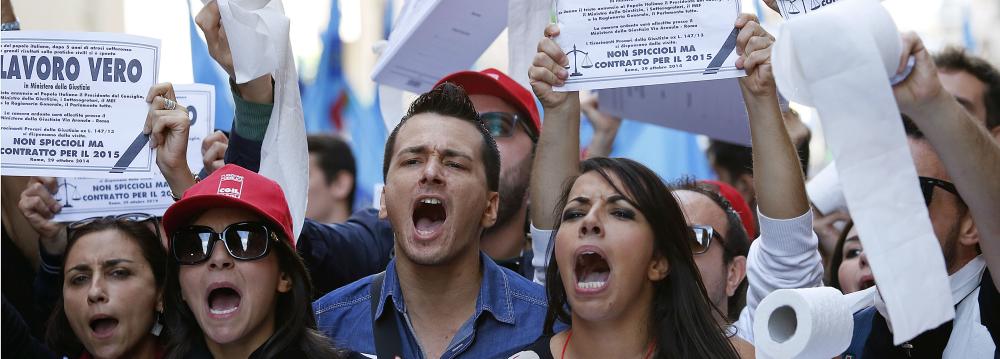Economic growth across the 19-country eurozone is showing further signs of faltering following a strong start to the year. A closely monitored survey of business activity shows that output growth in May slowed to its weakest rate since early 2015.
Financial information company Markit said Monday that its flash composite purchasing managers' index—a broad gauge of business activity across the services and manufacturing sectors—fell to a 16-month low of 52.9 points in May from April's 53.0. Anything above 50 indicates expansion, AP reported.
The reading, which is based on approximately 85-90% of the final number of replies to the survey, is the latest in a series of indicators pointing to waning eurozone growth following a perky start to the year. Though Germany and France, the eurozone's top two economies, performed robustly, there was a cooling elsewhere.
Chris Williamson, Markit's chief economist, said the survey adds "further to the suggestion that the robust pace of economic growth seen in the first quarter will prove temporary."
Markit's survey points to second-quarter growth of 0.3%, which would be lower than the 0.5% recorded in the first three months of the year. The first-quarter performance came in the face of huge volatility in global financial markets largely connected to uncertainty over the slowdown in China. Factors that helped the eurozone during the first quarter included further stimulus measures from the European Central Bank, a lower euro that helped boost exports, and falling prices that increased consumers' spending power.
Stuck in Low-Growth Phase
The slowdown that appears to be taking place has been predicted by many economists not least because many of the factors that previously buoyed growth have largely played out, such as the fall in the value of the euro. The region also faces a number of headwinds in the months ahead, many beyond its borders, such as the British vote on June 23 on whether to leave the European Union and ongoing uncertainty over China.
Looking ahead, Williamson said the survey points to a further loss of momentum. Inflows of new work, he noted, showed the smallest rise for nearly a year-and-a-half, while optimism about the outlook in the services sector sank to its lowest since July 2015.
"The survey therefore paints a picture of a region stuck in a low-growth phase, managing to eke out frustratingly modest output and employment gains despite various ECB stimulus 'bazookas', a competitive exchange rate and households benefiting from falling prices," Williamson said.
After the strongest quarter in a year, economic growth in the eurozone is set to slow in the current three-month period. Data this week and new European Central Bank staff projections on June 2 will provide an updated outlook.
For ECB President Mario Draghi, who cut interest rates to new lows this year and is pumping yet more money into the economy, the key is whether the first-quarter performance is the beginning of a new phase that’ll return inflation to the ECB’s goal or a one off, suggesting more stimulus may be needed.
Reforms Necessary
Europe's politicians must raise their game if they are to aid the region's economic recovery, the European Central Bank has warned.
Minutes of the central bank’s latest meeting revealed that policymakers had “strongly reiterated the need for other policy areas to contribute much more decisively” in assisting economic reform of the eurozone.
Members of the ECB’s governing council declared that such efforts were required “both at the national and European levels” in order to provide support to long-run economic growth.
Eurozone inflation has remained below the ECB’s target of close to 2% since early 2013. The most recent data revealed that the eurozone is currently experiencing mild deflation. It is thought that economic reforms could help to boost activity and price growth.
ECB officials said that they would need to assess “the extent to which structural reforms affected developments in inflation… including possibly persistent disinflationary effects arising from too slow an implementation”.


